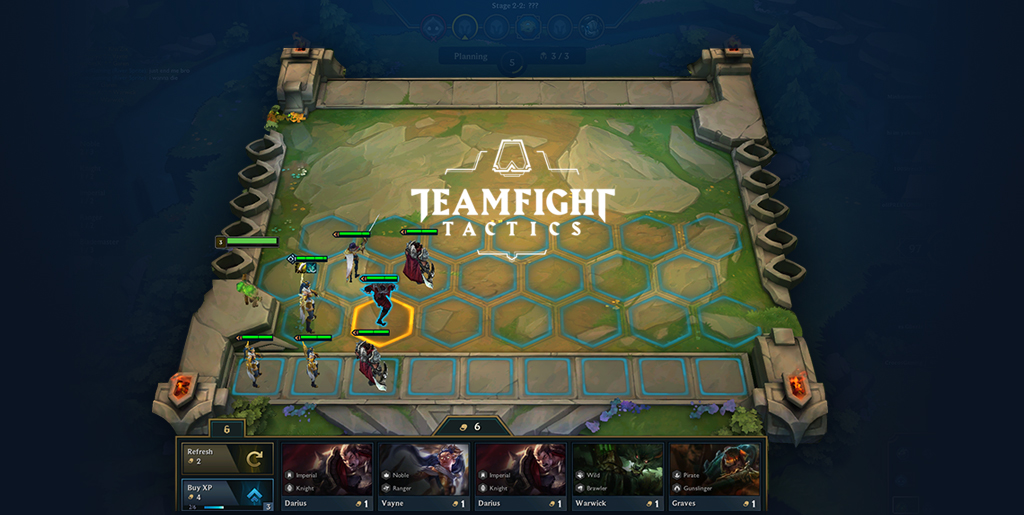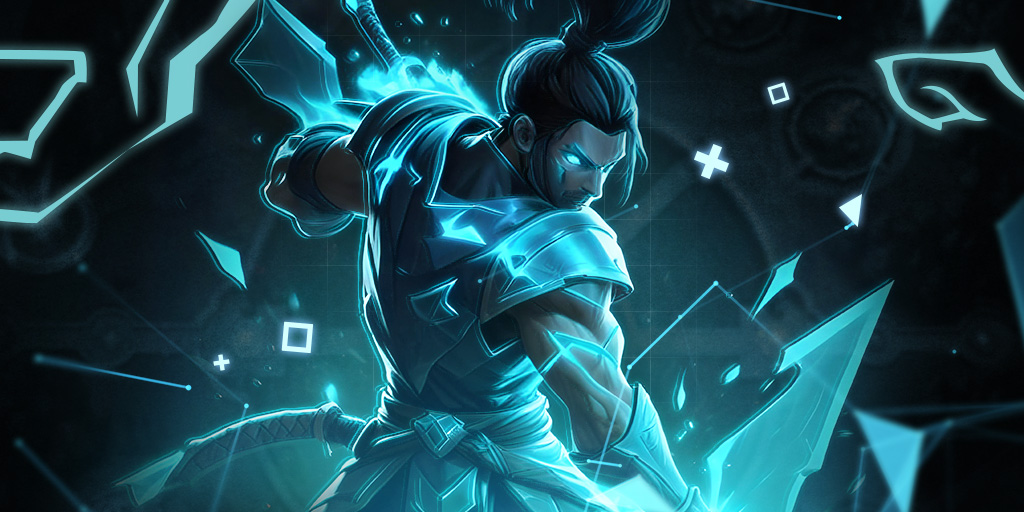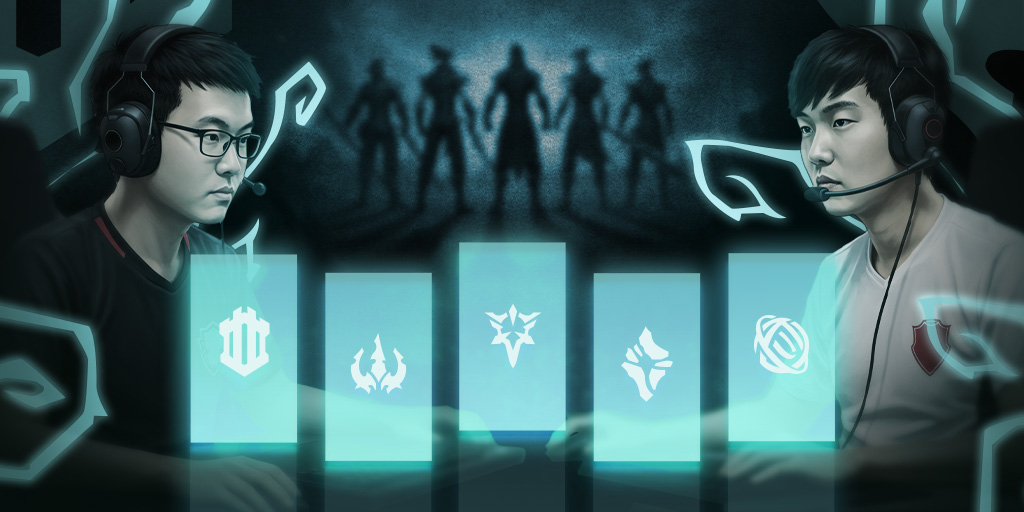What is Teamfight Tactics?
Teamfight Tactics, also known as ‘TFT’, is an autobattler game that pits eight players in a Round Robin format on a chess-inspired board. Players are given a set amount of gold at the beginning of the game to buy an initial set of champions, and as the game progresses players that successfully defeat opponents and survive will earn a gold income, which will enable them to enhance their lineup of champions. The goal of the game is to deplete the health points (HP) of the seven other opponents by drafting a champion lineup that will survive the Round Robin.
Insightful Teamfight Tactics articles
Event previews, strategy articles and all the latest odds
Follow Pinnacle EsportsTFT beginner's guide: Game structure
TFT is split into several stages which are: the planning phase, shared draft, PvP phase, and the PvE phase. As the title entails, the planning stage is the period in the game where you draft your champion lineup onto the board and make any purchases with gold. The shared draft happens at the beginning of the game, and allows you to select one champion occurring every couple of rounds. The PvP phase pits two champion lineups against each other, and the PvE phase pits your lineup against AI-controlled monsters that drop items when defeated.
Using gold in Teamfight Tactics
Gold is the primary resource in TFT and will enable you to buy champions, refresh your store and level up faster. Gold is earned passively per round played, earned as interest on the amount of gold you have in your inventory, rewarded as a bonus on winning or losing a PvP round and exchanged when selling a champion.
Economy management for gold is a crucial part of autobattlers and being able to assess how much gold you will need to buy or upgrade your lineup in the current round as well as future rounds can determine how successful you are at TFT.
Leveling up & Drafting champions
Starting at level 1 with a maximum at level 9, each level allows you to place one additional champion on the board and gain access to better champions as you progress. You gain 2 experience (XP) per round played and can spend 4 gold in exchange for 4 XP. Deciding whether or not to spend your gold on XP is dependent on what your overall strategy for the initial set of champions you drafted early in the game.
Having a flexible approach to drafting champions on the board can greatly increase your chances of surviving in the Round Robin.
Identifying a suitable champion lineup, given that the champions you can purchase with gold are entirely random, can make it difficult for players to stick to one strategy and it's advantageous to those that can improvise. Each champion will have a unique origin and class for a total of 13 origins and 10 classes. Drafting a lineup that has similar origin and class traits will give the matching champions a corresponding enhancements which can be utilised to increase your chances of winning a head-to-head battle in the following round.
Enhancing your champions: Items, Star levels & champion cost
Champions in your draft can be enhanced through two primary avenues, items and star levels.
Items can be attached to specific champions to enhance the amount of damage they deal or give their attacks unique traits. Items can be obtained during the shared draft phase and PvE phase.
Star levels, on the other hand, involve merging identical champions to enhance their overall base statistics; combine three 1-star champions to create one 2-star champion, and three 2-star champion to create a 3-star champion.
Champions are priced in a tiered system with tier 1 champions costing 1 gold, tier 2 champions costing 2 gold, and so on until tier 5. Generally the higher the tier of a champion the stronger they are, however, players hoping to draft a board full of tier 5 champions will find that they are exceptionally rare to come by.
Teamfight Tactics Origins & Classes
As mentioned previously, there are 13 origins and 10 classes in TFT with each outlining unique traits for a champion. Matching champions that have a similar origin or class will unlock enhanced traits that can greatly increase the strength of the corresponding champions.
The 13 origins are: Demon, Dragon, Exile, Glacial, Robot, Imperial, Noble, Ninja, Pirate, Phantom, Wild, Void and Yordle. Here's our detailed guide to the origins in Teamfight Tactics.
The 10 classes are: Assassin, Blademaster, Brawler, Elementalist, Guardian, Gunslinger, Knight, Ranger, Shapeshifter and Sorcerer.
For a detailed overview of origin and class, Riot Games has provided a champion compendium for players to reference.
The best strategy for Teamfight Tactics
Whilst the meta game for TFT hasn’t developed yet, the best strategy revolves around selecting and upgrading an initial set of champions that ideally share common classes and origins.
Champions that have a higher cost will have greater base stats making them more effective when upgraded in Star levels.
The composition should consist of three front-line tanks or brawlers with a mix of high damage ability power and attack damage dealers by the time you’re level 6. Past this level, players may want to consider adding support champions like Lulu or Leona who can provide abilities like Overgrowth and Solar Flare to disrupt the enemy lineup. Having champions that have been upgraded to 2 and 3-stars will go a long way in improving the survivability of your lineup - thus it is highly recommended to spend gold in obtaining the relevant champions you want to increase in star-level at every opportunity.
Players will definitely notice whether or not their lineup is strong by the middle of the game, as opponents either have higher HP than you or opponents are beginning to drop out. If you find you’re in a situation that threatens to knock you out of the game, consider positioning your champions in a different way, or quickly selling champions that you think are underperforming within your lineup and swapping them out for ones that are more suitable.
Winning your first TFT game may not come easy and many will be in the same boat as you when navigating the newly created autobattle genre. Players that are creative in their champion lineup will probably be the most successful in the game’s infancy as the meta shifts and evolves over time.



